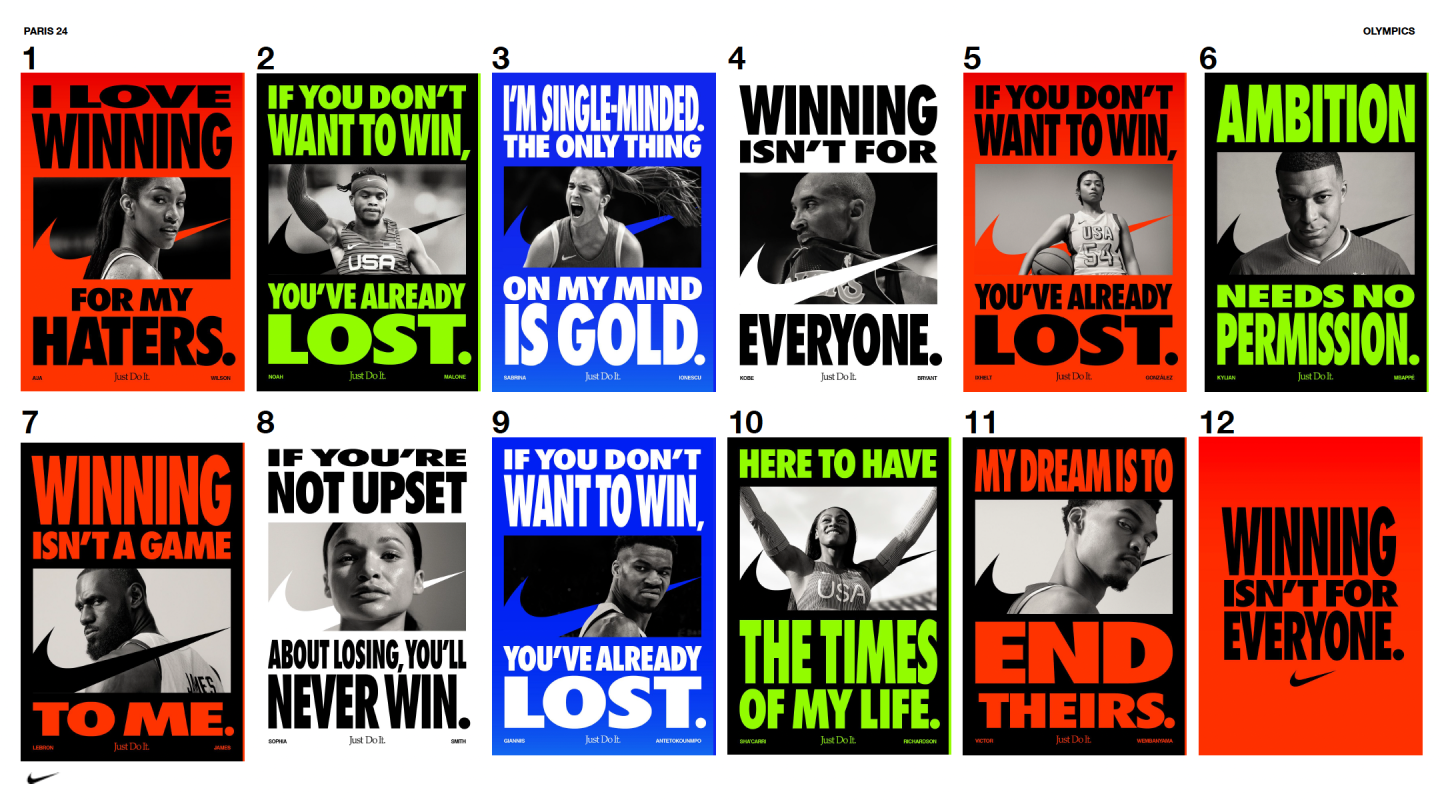Augmented Reality for Food Franchises: 10 Proven Ideas to Drive Repeat Visits
If your franchise relies on visit frequency, AR is your unfair advantage. It transforms every on-site touchpoint—your windows, walls, cups, boxes, and menus—into a reason to scan, play, redeem, and return. With BrandXR, you can publish the same creative across the web (WebAR), Snapchat, and TikTok, and update fresh content monthly without any reprinting.
Below is a playbook of 10 in-store friendly AR ideas (optimized for concepts where guests order inside). Under each idea, you'll find a detailed case study from major food franchises demonstrating the tactic's effectiveness in the real world. For more examples, explore our comprehensive
case studies.
Why AR drives repeat visits for food franchises
- Zero friction. Scan a QR or tap a link—no downloads required with WebAR.
- Habit loops. Monthly collectibles, level unlocks, and deadline-based offers create repeatable behaviors.
- Measurable value. Track scans, time spent, shares, coupon redemptions, and—when connected to your POS/loyalty—return visits within 14/30 days and lift vs. baseline.
- Tip: schedule AR like limited-time offers—new drops monthly or quarterly—so regulars expect something fresh on every visit. Learn more about the comprehensive benefits of AR murals for businesses and communities.
1) AR Storefronts: "Window to the Kitchen"
What it is: Place a small decal or poster at the entrance that unlocks an AR "peek" into signature prep (steam, sizzle, nutrition callouts) and a 7-day bounce-back reward.
Why it works: It greets guests pre-order, sets a craveable anchor, and uses a deadline to encourage a second visit soon.
Transform traditional storefronts with engaging AR experiences that captivate customers before they even enter your store.
How to deploy
- Decals at door and order line; one universal QR that you can update server-side.
- Promote a weekday return offer (e.g., free upgrade Sun–Thu within 7 days).
- Add an on-screen "Add to Order" button for digital queueing where available.
Detailed Case Study – Starbucks Shanghai Roastery AR Tour: Starbucks transformed the in-store experience at its flagship Shanghai Roastery with an immersive AR tour that visitors activate upon entry. Using a mobile app, guests scan coffee barrels, roasting equipment, and installations to access digital stories about the coffee-making process. The gamified experience grants virtual badges for exploring different stations, with a custom AR selfie filter unlocked after completing the entire tour.
Business Results: The AR experience became a key part of the Roastery's appeal as a destination, significantly increasing customer dwell time and turning a coffee purchase into an educational experience. The Shanghai Roastery, enhanced by this AR tour created with Alibaba, became a must-visit spot that keeps customers engaged much longer than a typical café visit. The gamification elements motivate visitors to return and complete different parts of the tour, creating natural incentives for repeat visits.
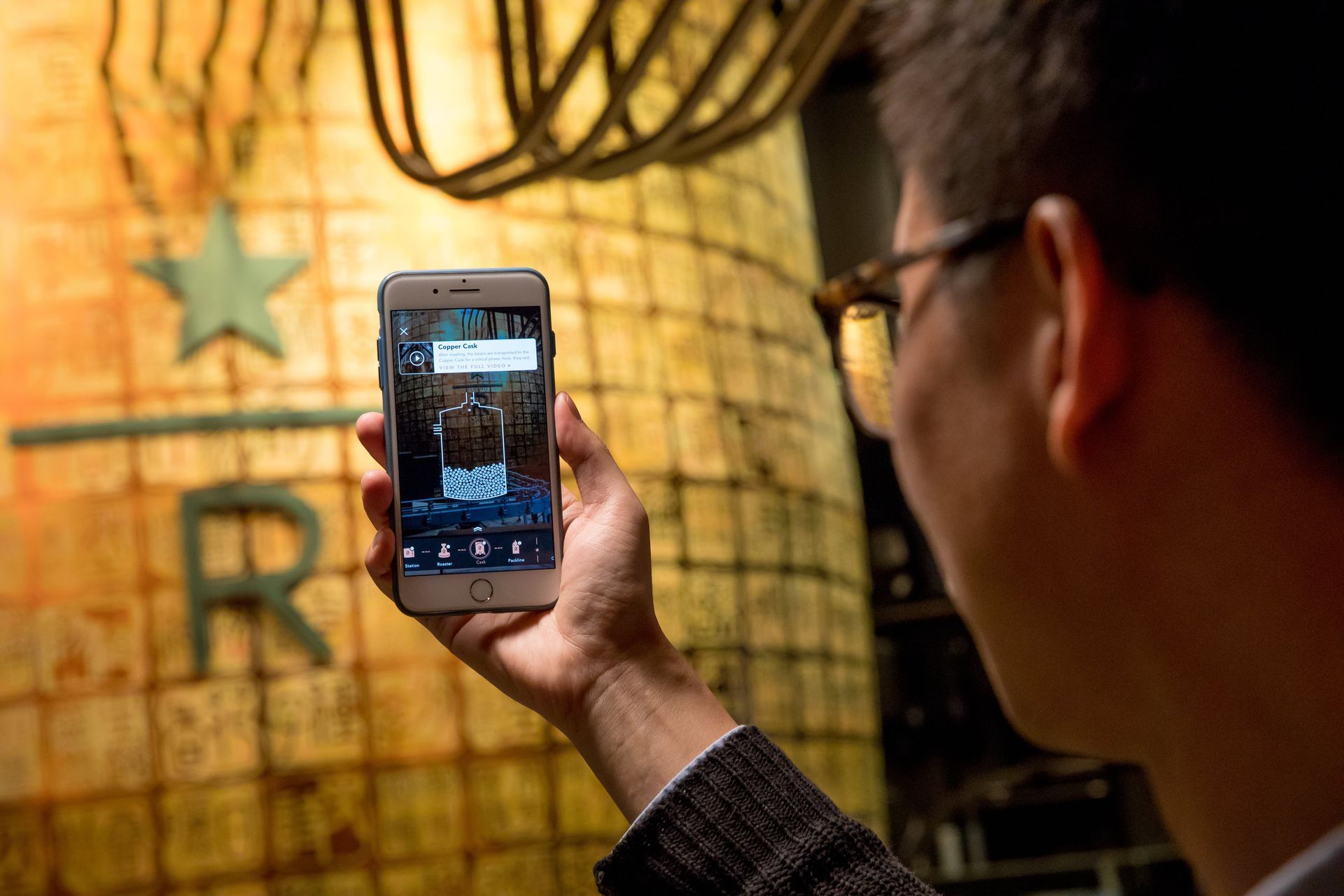
2) AR Murals: The Shareable "Come Back Monthly" Wall
What it is: Commission (or vinyl-wrap) a photogenic mural. The AR layer animates characters and ingredients, dropping a new collectible or reward each month.
Why it works: Families and fans return to complete the set; every photo at the wall is free marketing.
Discover how AR murals are turning restaurant walls into engaging content creation hubs. Design interactive AR murals that motivate families to come back every month for new collectibles.
How to deploy
- Put the mural where queues form.
- Post the drop calendar in-store and on social.
- Reward 3 months completed with a dessert or drink.
Detailed Case Study – BrandXR's Verizon AR Mural Activation: BrandXR's mural activation in Miami achieved impressive engagement metrics that food franchises can emulate. The AR mural campaign recorded 357,000 total plays, 370,800 views, 1,499 favorites, and 740 social media posts from 500+ unique content creators.
Business Results: The device split indicated broad accessibility (47% iOS / 43% Android), and audience interests leaned toward Shoppers, Gamers, and Film & TV Fans—demographics that align perfectly with food franchise target markets. This case study demonstrates that AR murals serve as powerful content creation tools, converting every visitor interaction into potential viral marketing while increasing measurable foot traffic to physical locations.
Bonus proof – Starbucks APAC AR mural: Starbucks created its first APAC AR mural so guests could animate the artwork on their phones—showing how premium brands use murals as interactive brand beacons that encourage social sharing and repeat visits.
3) AR Billboards & OOH → Store Handoffs
What it is: OOH or social ads that open a snackable AR mini-experience (5–10 seconds) and hand off to a store-only reward or one-tap order.
Why it works: You convert fleeting awareness into action while the craving is hot.
Transform traditional outdoor advertising with AR billboards that create memorable brand experiences. See how the evolution of OOH advertising has led to today's interactive AR experiences.
Detailed Case Study – Domino's Shoppable AR Lens: Domino's launched a pioneering national Snapchat "Shoppable AR" lens that enabled users to visualize a 3D pizza box in their environment and order a Domino's pizza without leaving the app. The two-way lens displayed virtual sunglasses reflecting a pizza in selfie mode, and through the rear camera, a 3D Domino's box appeared with an "Order Now" button.
Business Results: National AR lenses on Snapchat typically reach
15–20 million people and generate
40–60 million impressions. Nielsen studies show AR lens campaigns drive an average
10% sales lift. Domino's UK later refined their Snapchat AR strategy and reported an
18% higher ROI and 50% lower
cost-per-order, demonstrating AR's ability to boost conversion while significantly reducing customer acquisition costs. This campaign marked a milestone in shoppable AR, proving that AR can create a seamless path from awareness to purchase.
4) AR Merch & Takeaways: Cups, Boxes & Stickers That "Scan-to-Collect"
What it is: Use packaging (cups, pizza boxes, kids' stickers) as a monthly content channel. Every fourth scan unlocks a bonus.
Why it works: Collection mechanics are catnip for families and superfans, and the media lives in-hand.
Detailed Case Study – Pizza Hut's PAC-MAN® AR Box: Pizza Hut turned takeout packaging into the world's best-selling "game console" with their nostalgic WebAR PAC-MAN experience. Customers scanned a QR code on limited-edition boxes to activate a playable AR PAC-MAN maze on the box top, turning dinner into an interactive gaming session.
Business Results: The month-long campaign achieved impressive metrics:
10.6 million AR pizza
boxes sold,
11,260 hours of gameplay logged, and an estimated
741 million media impressions. Customers eagerly shared high scores on social media for chances to win custom PAC-MAN arcade cabinets. The AR-enabled packaging essentially became a gaming platform that fostered ongoing engagement well after the meal ended, encouraging repeat purchases as customers aimed to improve their scores and complete challenges. This case study demonstrates that AR packaging can turn routine takeout into memorable experiences that generate huge social buzz and loyalty.
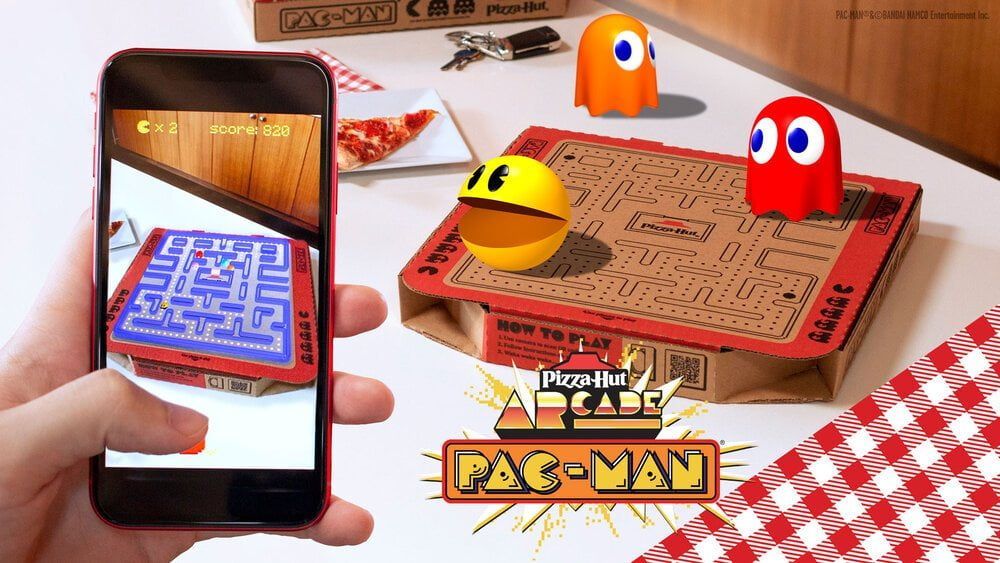
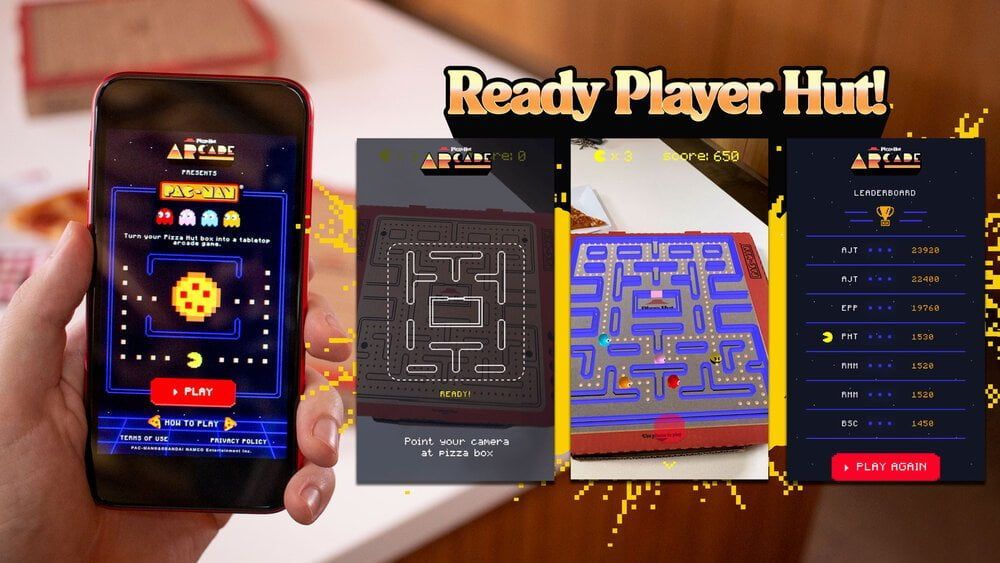
5) AR Menus: Faster Decisions, Higher Tickets
What it is: Tap to see 3D dishes, portion scale, allergen flags, and upsell paths ("make it a combo," "add protein"). Works on table tents or counter cards.
Why it works: Guests decide faster, explore more, and leave curious to try the next item on a future visit.
Detailed Case Study – Panera Bread AR Menu Campaign: Panera launched an innovative AR menu experience through mobile ad units that animated breakfast wraps, showcasing ingredients and detailed nutrition information. The WebAR campaign reached large audiences across Facebook and Snapchat with impressive results.
Business Results: The campaign reached
9.3 million users and generated
47,000 total shares with
171,000 swipe-ups. Most importantly,
25% of engaged users visited a Panera
café—totaling
34,000 store visits directly driven by AR interaction. On Snapchat specifically, the AR lens received
4.5 million impressions, and about
3% of swipers (1,019 customers) made a
digital purchase. This shows that AR menu previews not only increase transparency and engagement but also turn digital interactions into measurable in-store sales and foot traffic. With just $50K in ad spend, Panera proved that AR menus deliver excellent ROI through better decision-making and purchase conversions.
6) Neighborhood AR Scavenger Hunts (End at Your Counter)
What it is: Map 3–5 nearby points (park, partner retail, local art). Guests scan at each stop to earn stamps; the final scan and reward are in your store.
Why it works: It's family-friendly, community-building, and creates a weekend reason to return.
Detailed Case Study – McDonald's x Pokémon GO Partnership: McDonald's Japan launched one of the most successful location-based AR promotions by sponsoring over 3,000 locations as PokéStops and Gyms during Pokémon GO's peak popularity. Players visited McDonald's locations to collect items, battle, and catch Pokémon.
Business Results: The foot-traffic impact was remarkable—McDonald's Japan experienced
1.5 to 2 million
daily visits across sponsored locations, with an
estimated
22% sales increase directly linked to the AR game tie-in. The strategy effectively "lured customers in with Pokémon and sold them Big Macs," turning gaming engagement into real purchases. Similar partnerships in the U.S. with McDonald's and Starbucks demonstrated the global potential of location-based AR promotions. This case study highlights how leveraging existing AR platforms can generate high repeat visits from new audiences while delivering measurable revenue growth through strategic location placement.
7) Event-Day AR: Limited-Time Lenses That Pack the House
What it is: Tie special lenses to holidays, local festivals, or team game days; redeem that day only in store.
Why it works: Appointment content drives appointment dining.
Discover more about AR for events and special occasions.
Detailed Case Study – Taco Bell's Record-Breaking Cinco de Mayo Lens: Taco Bell showcased AR's viral potential with a playful Snapchat lens that transformed users' heads into giant Taco Bell taco shells for Cinco de Mayo. The fun filter quickly became an instant social media hit.
Business Results: In just one day, the taco-face lens accumulated 224 million views, making it the most-viewed Snapchat lens ever recorded at that time. Users spent an average of 24 seconds engaging with the lens and sending taco-head snaps to friends, generating significant peer-to-peer brand exposure. Although designed for entertainment rather than direct sales, the lens reached tens of millions of consumers and kept Taco Bell top-of-mind during peak dining hours.
Additional Success – Dunkin' National Donut Day: Dunkin' combined AR filters with a free donut promotion, creating a perfect mix of social engagement and store traffic. The one-day campaign resulted in a
10× increase in new Snapchat followers, became the brand's
most-watched Snap Story
ever, reached
3 million people with 40,000 engagements, and filled stores with customers redeeming AR-promoted offers. These examples demonstrate how event-driven AR creates special dining moments, generating significant awareness and immediate foot traffic.
8) Kids' Table AR: Short, Calm Mini-Games With a "Come Back" Cliffhanger
What it is: 60-second, no-audio games on tray liners or table tents (stack the tacos, flip the pizza, fill the cone). Levels 1–3 now; Levels 4–5 unlock next visit.
Why it works: Parents get a breather while kids beg to return to finish levels.
Detailed Case Study – Baskin-Robbins AR Campaigns: Baskin-Robbins has effectively used AR to engage families and boost dessert sales through culturally relevant campaigns. In Malaysia, they launched an AR-enhanced Chinese New Year campaign where scanning ice cream cups triggered a 3D lion dance on the packaging, blending tradition with technology.
Business Results: The festive AR experience helped "win back brand love and grow sales" during the holiday season, with award documentation highlighting sellouts and +10% ice cream cake sales compared to targets in participating outlets. In Australia, Baskin-Robbins partnered with Netflix's Stranger Things on an immersive AR scavenger hunt for their Scoops Ahoy menu. This campaign generated 5.2 million digital impressions and 55,000 social engagements, while boosting Baskin-Robbins' market share among teens (ages 13–24) from 29% to 45% during the promotion. The campaign also led to a notable increase in delivery orders over three months, demonstrating that family-friendly AR experiences turn engagement into sustained sales growth.
9) "Chef's Drop" AR: Launch Limited-Time Offers With Sizzle (and Bounce-Back)
What it is: Reveal limited flavors via AR "unboxings"—steam, spice meters, and a 48-hour early-bird window during slower dayparts. Reward a second visit to try another variant.
Why it works: FOMO + discovery + time-boxed value = more trips.
Detailed Case Study – Starbucks Holiday Cups AR Campaign: Starbucks used target-tracked AR to make its iconic holiday cups trigger seasonal effects through Instagram. The "Holijoy/Holiyay" filter allowed customers to scan Starbucks cups via Instagram, activating virtual snowflakes, festive messages, and even a tiny AR Starbucks store around the user.
Business Results: The holiday AR activation encouraged customers to buy reusable holiday cups (which offered drink discounts) and share their experiences on social media, creating a strong mix of digital engagement and loyalty rewards. The campaign generated a large amount of user-generated content as customers shared their AR experiences, effectively turning each holiday cup into a marketing tool that promoted both the seasonal drinks and the collectible cups themselves.
Additional Success – Chipotle's AvoLotto AR Lens: For National Avocado Day, Chipotle launched an innovative AR sweepstakes where users scanned real avocados with their phones for a chance to win
free
guacamole for a year. Up to
3,000 winners over three days received prizes through the AR experience. The campaign directly linked to Chipotle's loyalty program, and the broader "Summer of Extras" promotion (featuring the AR lens) attracted
5 million members,
with 40% making a purchase, and
loyalty
enrollments increasing 14% year-over-year. This shows how AR can effectively boost loyalty sign-ups, app engagement, and in-store conversions through fun incentives.
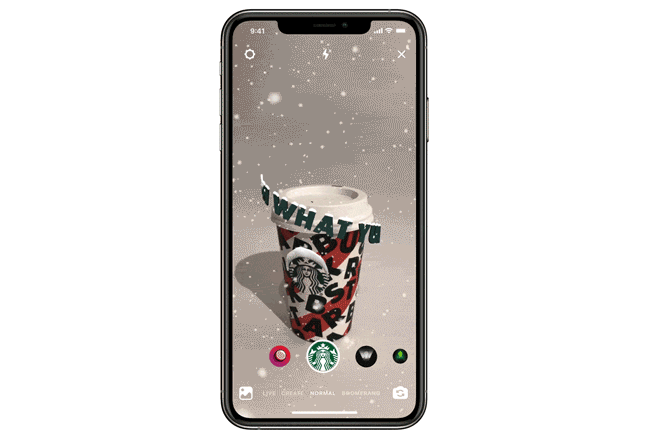
10) VIP Loyalty Collectibles ("Phygital" Badges You Can Wear)
What it is: Link loyalty tiers to unlockable AR badges and selfie effects; drop birthday-only filters and "show your badge" surprise perks.
Why it works: Status never sleeps—members protect their tier and keep coming back.
Detailed Case Study – Chipotle's AvoLotto Loyalty Integration: Chipotle's National Avocado Day AR lens effectively demonstrates how to tie AR engagement to loyalty programs. The "AvoLotto" lens encouraged users to scan real avocados; each scan served as a lottery ticket for a chance to win free guacamole for a year.
Business Results: Over the three-day campaign, 1,000 winners each day were selected through the AR experience and prompted to enter reward codes in Chipotle's app. The campaign was smoothly integrated with Chipotle's broader loyalty strategy—the "Summer of Extras" promotion featuring the AR lens attracted 5 million loyalty members, with 40% making purchases and loyalty enrollments increasing 14% year-over-year. This case study demonstrates that AR can effectively serve as a funnel into loyalty programs while creating engaging, shareable experiences that boost both app adoption and in-store visits.
Bonus Case Study: Gamified Competitor Targeting
Burger King's "Burn That Ad" AR Campaign: Burger King Brazil launched one of the boldest AR campaigns by turning their rivalry with McDonald's into a game. Using the BK app, users can point their phone at any McDonald's ad and see it "burn away" in AR, revealing a mobile coupon for a free Whopper.
Business Results: BK planned to distribute
500,000
free Whoppers through the AR experience. The campaign greatly increased BK app usage, building on a previous stunt that gained
1.5 million app
downloads in one week. "Burn That Ad" created viral buzz as fans shared videos of "flame-grilling" competitor ads, while coupon redemptions brought measurable traffic into stores. This campaign shows how AR gamification can turn competitors' media spending into your own foot traffic and digital growth.
Implementation Blueprint (so this gets done)
Choose your anchor channels
- WebAR for storefronts, murals, menus, cups, boxes.
- Snapchat/TikTok when you want maximum shareability or shoppable formats.
- Use one universal QR per touchpoint (we'll swap content server-side).
Pilot plan: 90 days, 3 assets
- Month 1: AR Storefront + 7-day bounce-back.
- Month 2: Kids' mini-game (Levels 1–3) + mural collectible #1.
- Month 3: LTO "Chef's Drop" + mural collectible #2 + loyalty badge unlock.
Operating simplicity
- 1-page register cheat sheet ("If guests ask…")
- Placement where phones naturally are: door, counter, table tent, box lid.
- Accessibility: clear 14–16pt instructions, captions, alt text.
Measurement from Day 1
- Baseline 8 weeks pre-AR: transactions, average ticket, repeat rate (loyalty).
- During AR: unique scans, time spent, shares, coupon claims, 14/30-day return rate, average ticket, incremental revenue vs. baseline or control stores.
Metrics You Can Take to the CFO
Based on the case studies above, here are proven benchmarks from real food franchise AR campaigns:
- Scan → Store Visit: Panera achieved 25% visit rate (34,000 visits from 9.3M reached)
- Digital Purchase Rate: 3% of Snapchat AR lens users made purchases (Panera)
- Sales Lift: McDonald's saw 22% sales increase from location-based AR
- Engagement Duration: Taco Bell users spent average 24 seconds with AR lens
- Social Sharing: Pizza Hut generated 741 million impressions from AR packaging
- Loyalty Growth: Chipotle's AR drove 14% year-over-year loyalty enrollment increase
- Market Share Growth: Baskin-Robbins increased teen market share from 29% to 45%
- ROI Improvement: Domino's achieved 18% higher ROI and 50% lower cost-per-order
Even one extra visit per household per quarter in your top ZIPs can pay for a year of AR content—especially when re-skinning core assets (game + mural + cups) across seasons.
Stay ahead of the latest AR advertising trends that are driving measurable ROI for brands. View real-world case studies showing measurable ROI from AR implementations.
FAQs
Do guests need an app? No. Most ideas run in WebAR from a QR. We can also publish to Snapchat and TikTok to tap social sharing.
How fast can we launch? Storefronts, menus, and a first mini-game typically launch in 2–4 weeks after creative approval. Multi-asset calendars roll out quarterly.
Will this overwhelm staff? No. One universal QR + a register cheat sheet. Redemptions can be POS barcodes or loyalty offers.
How do we stop fraud? Use geofences, single-use codes, and time windows (e.g., 48-hour LTO unlocks).
Does this work for drive-thru concepts? Yes—but this guide focuses on franchises with indoor ordering, where murals, storefronts, menus, and table tents shine.
Ready to Work With The Pros?
Looking for a pilot that demonstrates lift across two to three stores within 90 days? Talk to a Pro, and we'll tailor a storefront, mural, and menu plan, publish them to WebAR, Snapchat, and TikTok, and tie them to your POS/loyalty so you can measure the repeat-visit impact with confidence.
Ready to transform your franchise with AR?
Contact our team today to get started.
TALK TO A PRO
We're here to bring your brand to life!
Stay Connected with BrandXR
Create Augmented Reality for Free!
Create, Publish, and Measure 3D Augmented Reality Experiences Without Having to Code.












